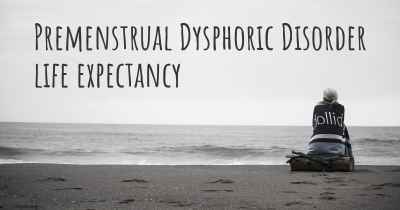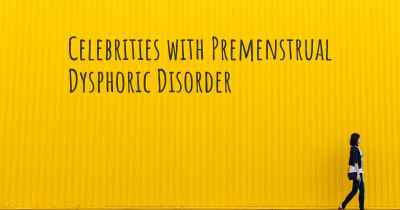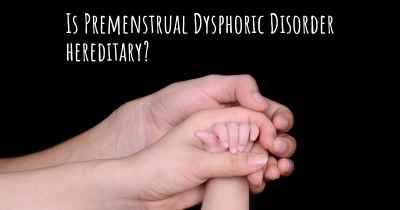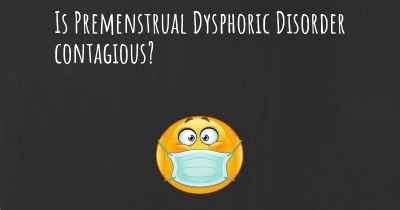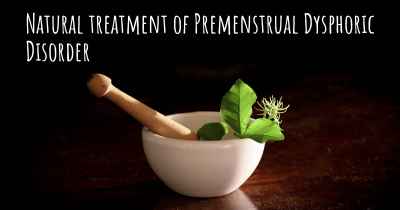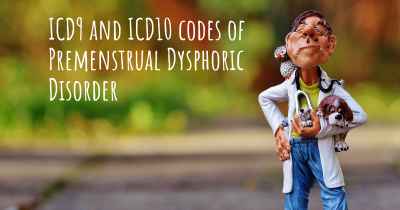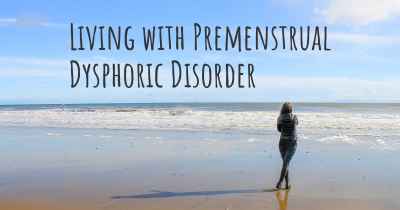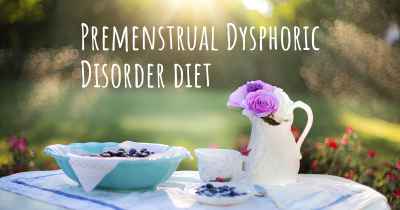What are the latest advances in Premenstrual Dysphoric Disorder?
Here you can see the latest advances and discoveries made regarding Premenstrual Dysphoric Disorder.
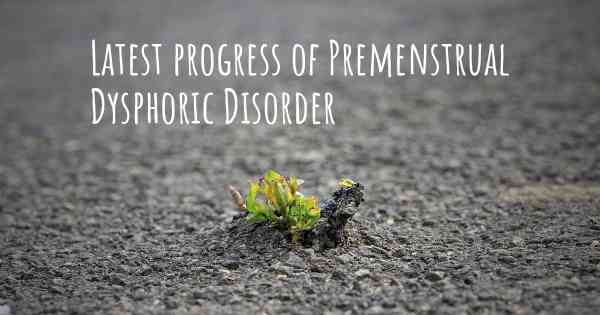
Premenstrual Dysphoric Disorder (PMDD) is a severe form of premenstrual syndrome (PMS) that affects a significant number of women. It is characterized by intense mood swings, irritability, depression, anxiety, and physical symptoms in the week or two before menstruation. PMDD can significantly impact a woman's quality of life, relationships, and daily functioning. While the exact cause of PMDD is still unknown, researchers have made significant advances in understanding and treating this disorder.
1. Improved Diagnostic Criteria:
One recent advance in PMDD is the development of improved diagnostic criteria. The Diagnostic and Statistical Manual of Mental Disorders, 5th Edition (DSM-5) now includes specific criteria for diagnosing PMDD, making it easier for healthcare professionals to identify and treat the disorder. This has led to increased awareness and recognition of PMDD as a legitimate medical condition.
2. Hormonal Treatments:
Hormonal treatments have been a mainstay in managing PMDD symptoms. Selective serotonin reuptake inhibitors (SSRIs), commonly used as antidepressants, have shown efficacy in reducing the emotional and physical symptoms of PMDD. Recent studies have also explored the use of hormonal contraceptives, such as combined oral contraceptives and gonadotropin-releasing hormone agonists, to regulate hormone levels and alleviate PMDD symptoms. These treatments have provided relief for many women suffering from PMDD.
3. Non-Hormonal Treatments:
While hormonal treatments have been effective for many, some women may prefer non-hormonal options. Cognitive-behavioral therapy (CBT) has emerged as a promising non-pharmacological treatment for PMDD. CBT helps individuals identify and change negative thought patterns and behaviors, leading to improved coping strategies and symptom management. Additionally, lifestyle modifications such as regular exercise, stress reduction techniques, and dietary changes have shown potential in reducing PMDD symptoms.
4. Research on Neurotransmitters:
Researchers have been investigating the role of neurotransmitters in PMDD. Serotonin, a neurotransmitter involved in mood regulation, has been found to be dysregulated in women with PMDD. This understanding has led to the development of targeted treatments that aim to modulate serotonin levels. For example, selective serotonin reuptake inhibitors (SSRIs) work by increasing serotonin availability in the brain, thereby alleviating PMDD symptoms. Ongoing research continues to explore other neurotransmitters and their potential involvement in PMDD.
5. Personalized Medicine:
Advances in genetics and personalized medicine have opened up new possibilities for understanding and treating PMDD. Genetic studies have identified specific gene variants associated with PMDD susceptibility, shedding light on the biological mechanisms underlying the disorder. This knowledge may eventually lead to personalized treatment approaches, where interventions can be tailored to an individual's genetic profile, optimizing effectiveness and minimizing side effects.
6. Increased Awareness and Support:
Over the years, there has been a growing recognition of PMDD as a legitimate medical condition. This increased awareness has led to improved support systems for women with PMDD. Online communities, support groups, and educational resources have emerged, providing a platform for women to share their experiences, seek advice, and access information about PMDD. This sense of community and support can be invaluable for individuals struggling with PMDD.
In conclusion, significant advances have been made in understanding and treating PMDD. Improved diagnostic criteria, hormonal and non-hormonal treatments, research on neurotransmitters, personalized medicine, and increased awareness and support have all contributed to better management of PMDD symptoms. While there is still much to learn, these advancements offer hope for women affected by PMDD, providing them with options for relief and improved quality of life.
Latest treatments include mindfulness meditation to control the cortisol levels in the body.
Posted Jul 24, 2017 by Limerencia 2070
Posted Sep 10, 2017 by son678 2000
Although less studied, SNRIs have also shown benefit in PMDD. In a randomized, controlled clinical trial of people with PMDD, 60% of the people taking venlafaxine improved versus 35% on placebo. Improvement was noticed during the first treatment cycle with 80% symptom reduction.[22]
Another FDA approved treatment for PMDD is the oral contraceptive with ethinylestradiol and drospirenone, a novel progestin.[18] It has been shown that hormonal birth control containing drospirenone and low levels of estrogen helps relieve severe PMDD symptoms, for at least the first three months it is used.[23] The idea behind using oral contraceptives is to suppress ovulation by controlling sex hormone fluctuations during the luteal phase.
Psychotherapy Edit
Cognitive behavioral therapy (CBT) has been shown to be effective in PMS and is suggested as a successful adjunct to SSRI treatment. CBT is an evidence-based treatment approach for treating depression and focuses on the link between mood, thoughts, and actions to help patients address current issues and symptoms. When CBT was compared to SSRI alone or in combination with SSRI, groups receiving CBT had significant improvement of PMS symptoms. Through the practice of CBT, patients are better able to recognize and modify recurrent issues as well as thought and behavior patterns that interfere with functioning well or that make depressive symptoms worse.[24]
Alternative medicine Edit
There have been some nutritional supplements that have been shown to help alleviate the symptoms of PMDD. In 1998, a placebo-controlled, randomized trial of 720 people with PMDD found that calcium carbonate demonstrated up to a 50% reduction in symptoms, compared with a 30% reduction in the control group.[25][26][27] Herbal treatments that have shown promise in PMDD include chasteberry (Vitex agnus castus), St. John's wort (Hypericum perforatum), and ginkgo (Ginkgo biloba). Studies have been conducted on the efficacy of chasteberry and gingko, but as of this writing, no randomized controlled trial has been conducted on the efficacy of St. John's wort in alleviating PMDD symptoms
Posted Oct 22, 2017 by Deanna 2550
https://www.sciencedirect.com/science/article/pii/S0889854505701601
Posted Aug 9, 2018 by April 3000
